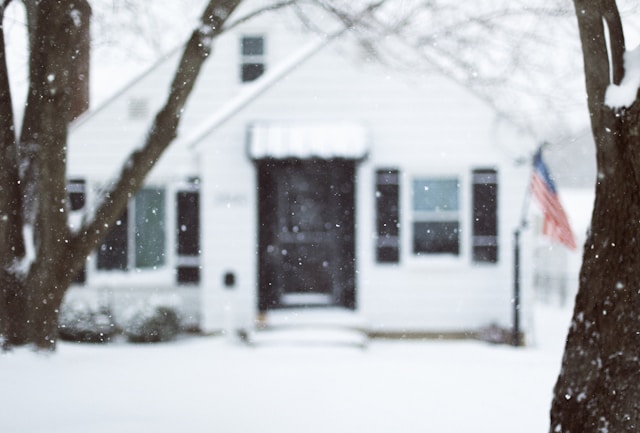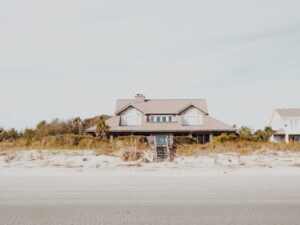How to Winterize Your Home and Prepare for the Cold Season
As winter approaches, taking steps to winterize your home is essential for protecting it from cold weather damage and costly repairs. Water damage from leaking or burst frozen pipes can cost thousands in electrical and structural damage. Here’s a comprehensive home winterization checklist to help you prepare for the season.
Following these tips not only keeps your home warm and efficient but can also impact your homeowner’s insurance, especially when it comes to preventing winter-related damages.

1. Protect Your Plumbing
- Turn Off Water When Away: If your home will be unoccupied, turn off the water supply and open faucets to relieve pressure. If you are home, let the cold water drip from faucets. This simple step helps prevent pipes from freezing and bursting.
- Insulate Exposed Pipes: Use pipe sleeves or heat cables to protect exposed pipes in unheated areas.
- Open Cabinet Doors: Keep cabinet doors under sinks open to allow warm air to circulate around plumbing. This small step can make a significant difference during temperature drops.
2. Seal Drafts
- Caulk and Weather Strip: Cold drafts not only make your home uncomfortable but also increase heating costs. Adding caulk and weather stripping around doors and windows can prevent drafts, keeping your home warmer and saving on energy bills.
- Insulate Attics and Basements: Proper insulation in attics, basements, and crawl spaces is crucial for maintaining a consistent indoor temperature.
- Inspect Foundation: Check for any cracks in your home’s foundation and seal them to avoid cold air seepage.
3. Prepare Your Heating System
- Maintain Heat: Make sure to maintain a minimum heat of 60 degrees Fahrenheit. Keep your garage door closed to preserve heat.
- Replace Furnace Filters: A clean furnace filter can improve the efficiency of your heating system. Replace the filter regularly and schedule an inspection with a professional to ensure your system is ready to handle winter demands.
- Check Chimneys and Fireplaces: Clean your chimney and check your fireplace for any necessary repairs. Keep the flue damper closed when not in use to retain heat within your home.
4. Safeguard Your Exterior
- Inspect Shingles and Gutters: Damaged roof shingles and loose gutters can allow water and ice to seep into your home. Schedule an inspection with an expert and repair any issues. Adding leaf guards to gutters can prevent debris buildup, allowing water to flow freely and reducing the risk of ice dams.
- Clean Downspouts: Properly maintained gutters and downspouts are essential for redirecting water away from your home, preventing foundation damage and ice buildup.
- Seal Deck: Give your deck a fresh coat of sealer to protect it from the winter elements.
5. Winterize Outdoor Systems
- Drain Sprinklers and Pool Lines: Prepare outdoor systems by draining water from sprinkler systems and pool lines. This will prevent pipes from freezing and bursting.
- Store Garden Hoses: Disconnect and store garden hoses in a warm, dry area to avoid cracks and damage from the cold.
Taking proactive steps to winterize your home not only keeps your property safe and comfortable during the cold months but also helps you avoid costly repairs and damage. Homeowner’s insurance often covers winter-related incidents, such as water damage from burst pipes or structural damage from ice buildup, but these claims can sometimes lead to higher premiums.
By implementing the winterization tips above, you reduce the likelihood of such incidents occurring. If you have questions about your homeowner’s insurance coverage or want to ensure you’re fully protected this winter, contact the experts at Stanton Insurance Group today. We’re here to help you safeguard your home against whatever the season may bring.




